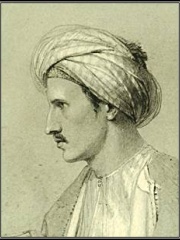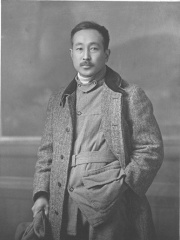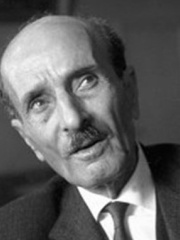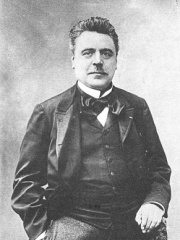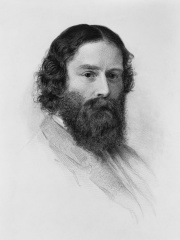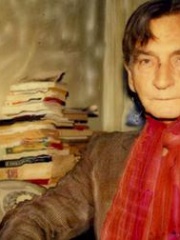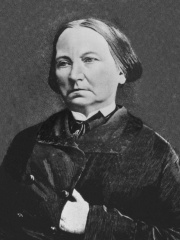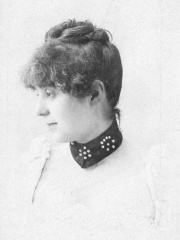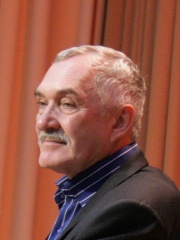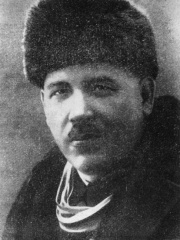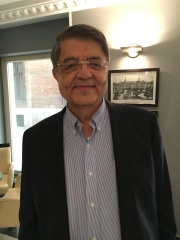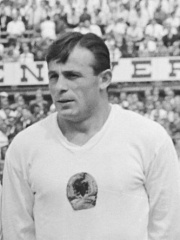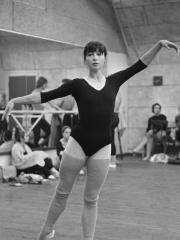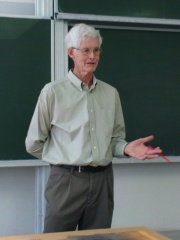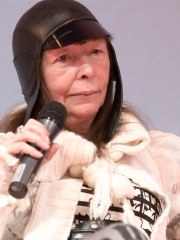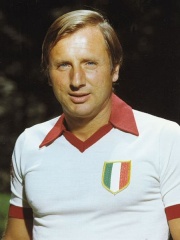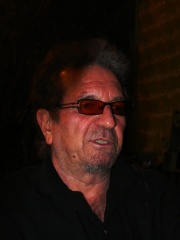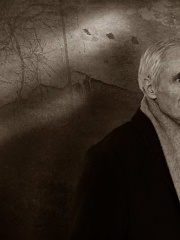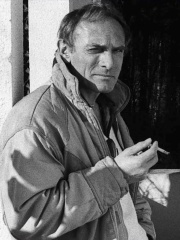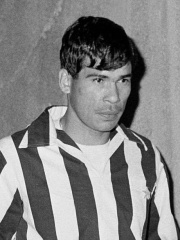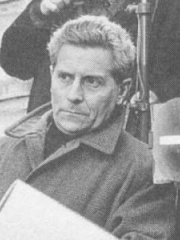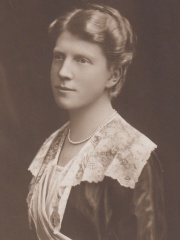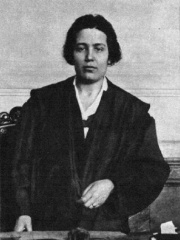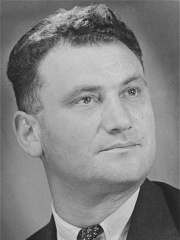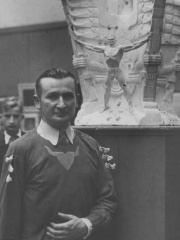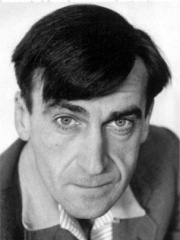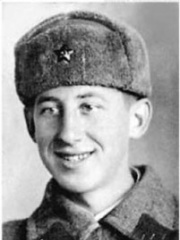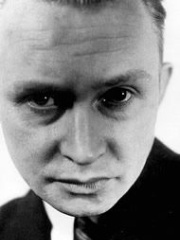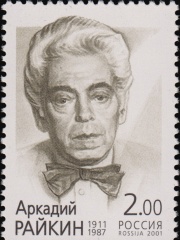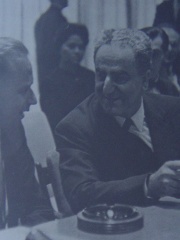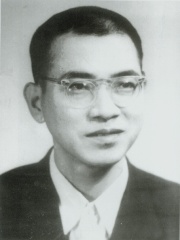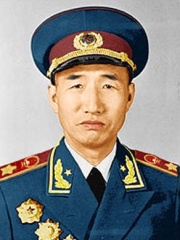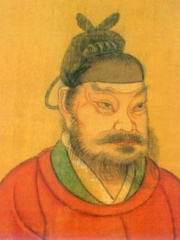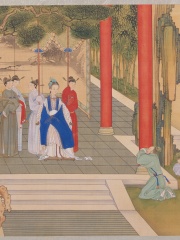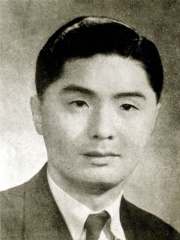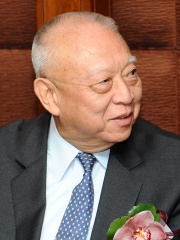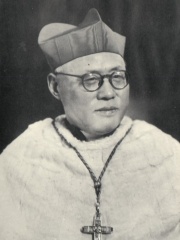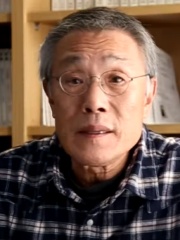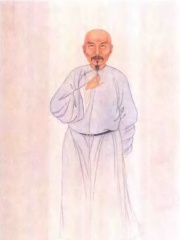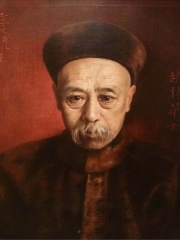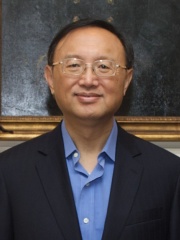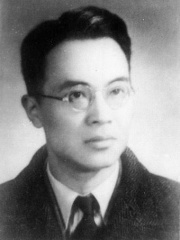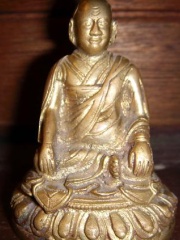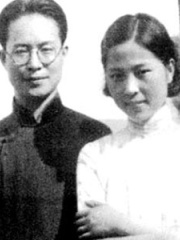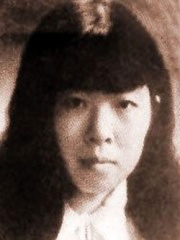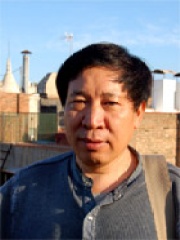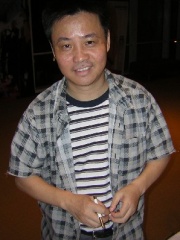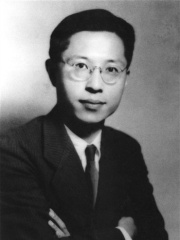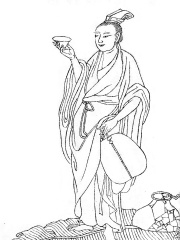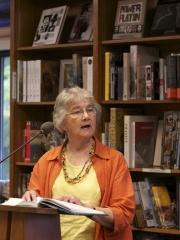WRITER
Chögyam Trungpa
1939 - 1987
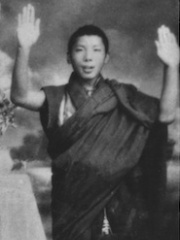
 Chögyam Trungpa
Chögyam Trungpa
Chögyam Trungpa (Wylie: Chos rgyam Drung pa; March 5, 1939 – April 4, 1987), formally named the 11th Zurmang Trungpa, Chokyi Gyatso, was a Tibetan Buddhist master and holder of both Kagyu and Nyingma lineages of Tibetan Buddhism. He was recognized by both Tibetan Buddhists and other spiritual practitioners and scholars as a preeminent teacher of Tibetan Buddhism. He was a major figure in the dissemination of Buddhism in the West, founding Vajradhatu and Naropa University and establishing the Shambhala Training method. The 11th of the Trungpa tülkus, he was a tertön, supreme abbot of the Surmang monasteries, scholar, teacher, poet, artist, and originator of Shambhala Buddhist tradition. Read more on Wikipedia
His biography is available in 21 different languages on Wikipedia (up from 20 in 2024). Chögyam Trungpa is the 3,595th most popular writer (up from 3,762nd in 2024), the 772nd most popular biography from China (up from 816th in 2019) and the 84th most popular Chinese Writer.
Memorability Metrics
Page views of Chögyam Trungpa by language
Among WRITERS
Among writers, Chögyam Trungpa ranks 3,595 out of 7,302. Before him are Edward William Lane, Takeo Arishima, Mikha'il Na'ima, Henry Becque, James Russell Lowell, and Albert Cossery. After him are Concepción Arenal, Elia Levita, Gabriela Zapolska, Vladimir Megre, Demyan Bedny, and Sergio Ramírez.
Most Popular Writers in Wikipedia
Go to all RankingsEdward William Lane
1801 - 1876
HPI: 58.96
Rank: 3,589
Takeo Arishima
1878 - 1923
HPI: 58.95
Rank: 3,590
Mikha'il Na'ima
1889 - 1988
HPI: 58.95
Rank: 3,591
Henry Becque
1837 - 1899
HPI: 58.95
Rank: 3,592
James Russell Lowell
1819 - 1891
HPI: 58.95
Rank: 3,593
Albert Cossery
1913 - 2008
HPI: 58.95
Rank: 3,594
Chögyam Trungpa
1939 - 1987
HPI: 58.95
Rank: 3,595
Concepción Arenal
1820 - 1893
HPI: 58.94
Rank: 3,596
Elia Levita
1469 - 1549
HPI: 58.94
Rank: 3,597
Gabriela Zapolska
1857 - 1921
HPI: 58.93
Rank: 3,598
Vladimir Megre
1950 - Present
HPI: 58.93
Rank: 3,599
Demyan Bedny
1883 - 1945
HPI: 58.93
Rank: 3,600
Sergio Ramírez
1942 - Present
HPI: 58.93
Rank: 3,601
Contemporaries
Among people born in 1939, Chögyam Trungpa ranks 275. Before him are Panajot Pano, Bill Mulliken, Ekaterina Maximova, Arik Einstein, Stephen Cook, and Brigitte Fontaine. After him are Giorgio Ferrini, Dariush Mehrjui, János Göröcs, Tigran Mansurian, Jean Van Hamme, and Néstor Combin. Among people deceased in 1987, Chögyam Trungpa ranks 129. Before him are Georges Franju, Princess Pilar of Bavaria, Victoria Kent, Tuvia Bielski, Stanisław Szukalski, and Patrick Troughton. After him are Vladimir Basov, Georg Muche, Aldo Boffi, Ivo Lapenna, Arkady Raikin, and Charles Malik.
Others Born in 1939
Go to all RankingsPanajot Pano
SOCCER PLAYER
1939 - 2010
HPI: 59.10
Rank: 269
Bill Mulliken
SWIMMER
1939 - 2014
HPI: 59.07
Rank: 270
Ekaterina Maximova
POLITICIAN
1939 - 2009
HPI: 59.04
Rank: 271
Arik Einstein
SINGER
1939 - 2013
HPI: 59.03
Rank: 272
Stephen Cook
COMPUTER SCIENTIST
1939 - Present
HPI: 59.01
Rank: 273
Brigitte Fontaine
SINGER
1939 - Present
HPI: 58.96
Rank: 274
Chögyam Trungpa
WRITER
1939 - 1987
HPI: 58.95
Rank: 275
Giorgio Ferrini
SOCCER PLAYER
1939 - 1976
HPI: 58.82
Rank: 276
Dariush Mehrjui
FILM DIRECTOR
1939 - 2023
HPI: 58.75
Rank: 277
János Göröcs
SOCCER PLAYER
1939 - 2020
HPI: 58.72
Rank: 278
Tigran Mansurian
COMPOSER
1939 - Present
HPI: 58.67
Rank: 279
Jean Van Hamme
COMIC ARTIST
1939 - Present
HPI: 58.67
Rank: 280
Néstor Combin
SOCCER PLAYER
1939 - Present
HPI: 58.64
Rank: 281
Others Deceased in 1987
Go to all RankingsGeorges Franju
FILM DIRECTOR
1912 - 1987
HPI: 59.26
Rank: 123
Princess Pilar of Bavaria
POLITICIAN
1891 - 1987
HPI: 59.15
Rank: 124
Victoria Kent
POLITICIAN
1891 - 1987
HPI: 59.06
Rank: 125
Tuvia Bielski
SOCIAL ACTIVIST
1906 - 1987
HPI: 59.05
Rank: 126
Stanisław Szukalski
PAINTER
1893 - 1987
HPI: 59.01
Rank: 127
Patrick Troughton
ACTOR
1920 - 1987
HPI: 58.99
Rank: 128
Chögyam Trungpa
WRITER
1939 - 1987
HPI: 58.95
Rank: 129
Vladimir Basov
ACTOR
1923 - 1987
HPI: 58.81
Rank: 130
Georg Muche
PAINTER
1895 - 1987
HPI: 58.76
Rank: 131
Aldo Boffi
SOCCER PLAYER
1915 - 1987
HPI: 58.75
Rank: 132
Ivo Lapenna
POLITICIAN
1909 - 1987
HPI: 58.75
Rank: 133
Arkady Raikin
ACTOR
1911 - 1987
HPI: 58.68
Rank: 134
Charles Malik
WRITER
1906 - 1987
HPI: 58.59
Rank: 135
In China
Among people born in China, Chögyam Trungpa ranks 772 out of 1,610. Before him are Chen Jingrun (1933), Xu Xiangqian (1901), Shi Jingtang (892), Deng Sui (81), Rong Yiren (1916), and Emperor Xiaoming of Northern Wei (510). After him are Tung Chee-hwa (1937), Thomas Tien Ken-sin (1890), Hwang Sok-yong (1943), Wei Yuan (1794), Yikuang (1838), and Yang Jiechi (1950).
Others born in China
Go to all RankingsChen Jingrun
MATHEMATICIAN
1933 - 1996
HPI: 59.03
Rank: 766
Xu Xiangqian
POLITICIAN
1901 - 1990
HPI: 59.03
Rank: 767
Shi Jingtang
MILITARY PERSONNEL
892 - 942
HPI: 59.00
Rank: 768
Deng Sui
POLITICIAN
81 - 121
HPI: 59.00
Rank: 769
Rong Yiren
POLITICIAN
1916 - 2005
HPI: 58.95
Rank: 770
Emperor Xiaoming of Northern Wei
POLITICIAN
510 - 528
HPI: 58.95
Rank: 771
Chögyam Trungpa
WRITER
1939 - 1987
HPI: 58.95
Rank: 772
Tung Chee-hwa
POLITICIAN
1937 - Present
HPI: 58.93
Rank: 773
Thomas Tien Ken-sin
RELIGIOUS FIGURE
1890 - 1967
HPI: 58.91
Rank: 774
Hwang Sok-yong
WRITER
1943 - Present
HPI: 58.90
Rank: 775
Wei Yuan
PHILOSOPHER
1794 - 1857
HPI: 58.89
Rank: 776
Yikuang
POLITICIAN
1838 - 1917
HPI: 58.88
Rank: 777
Yang Jiechi
POLITICIAN
1950 - Present
HPI: 58.87
Rank: 778
Among WRITERS In China
Among writers born in China, Chögyam Trungpa ranks 84. Before him are Can Xue (1953), Qian Zhongshu (1910), Longchenpa (1308), Shen Congwen (1902), Xiao Hong (1911), and Song Yu (-298). After him are Hwang Sok-yong (1943), Yan Lianke (1958), Yu Hua (1960), Cao Yu (1910), Wang Bo (650), and Katherine Paterson (1932).
Can Xue
1953 - Present
HPI: 60.12
Rank: 78
Qian Zhongshu
1910 - 1998
HPI: 59.75
Rank: 79
Longchenpa
1308 - 1364
HPI: 59.68
Rank: 80
Shen Congwen
1902 - 1988
HPI: 59.66
Rank: 81
Xiao Hong
1911 - 1942
HPI: 59.08
Rank: 82
Song Yu
298 BC - 222 BC
HPI: 59.07
Rank: 83
Chögyam Trungpa
1939 - 1987
HPI: 58.95
Rank: 84
Hwang Sok-yong
1943 - Present
HPI: 58.90
Rank: 85
Yan Lianke
1958 - Present
HPI: 58.80
Rank: 86
Yu Hua
1960 - Present
HPI: 58.76
Rank: 87
Cao Yu
1910 - 1996
HPI: 58.55
Rank: 88
Wang Bo
650 - 676
HPI: 58.50
Rank: 89
Katherine Paterson
1932 - Present
HPI: 58.42
Rank: 90
